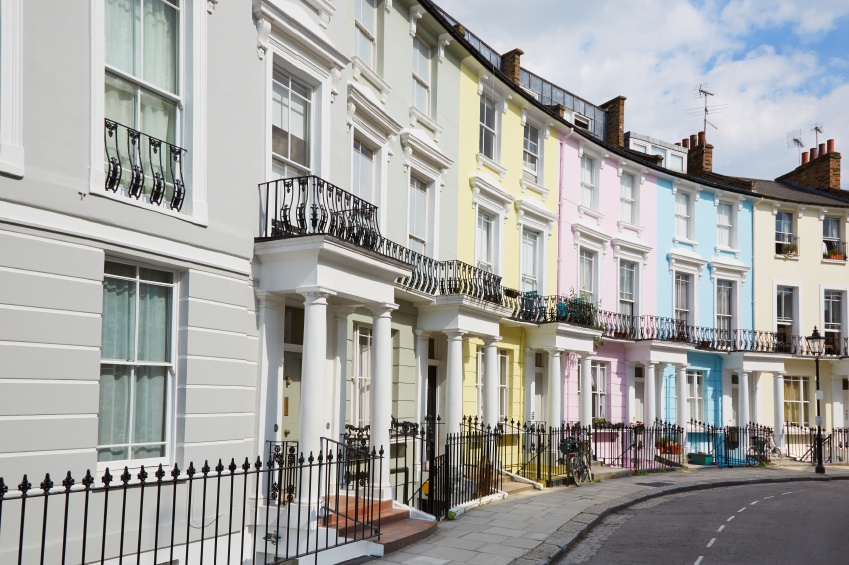Home » Uncategorised »
Prime Central London House Prices Hold, but Transactions Plummet
This article is an external press release originally published on the Landlord News website, which has now been migrated to the Just Landlords blog.

2016 proved a challenging year for prime central London house prices and sales, according to London Central Portfolio (LCP). So how will the past 12 months affect the next year in the market?
Over the last year, sales activity slumped in prime central London following Stamp Duty changes, which dramatically affected sentiment, and the uncertainty caused by the Brexit vote.
With these headwinds, prime central London house prices have started to fragment, creating a watershed at £1m. As a result, property prices at the lower end have shown modest growth, while values have come down at the luxury end.
For the market as a whole, however, prime central London house prices have remained stable, reports LCP. According to Q3 statistics from the Land Registry, prices fell by just 0.5% overall on an annual basis, to £1,590,472.
More significant has been the 24% decline in transactions over the past 12 months. The 58% and 50% falls for Q2 and Q3 respectively far outweigh the 29% increase recorded in Q1, ahead of the introduction of the 3% Stamp Duty surcharge for additional properties.
The number of transactions for the last year stands at just 3,696, found LCP. This is one of the lowest annual figures recorded by the Land Registry and equivalent to the depths of the financial crisis. It’s a huge 42% lower than two years ago, when the new Stamp Duty rates for residential property were introduced, significantly increasing the tax burden on homes worth more than £1.125m.
Prime central London house prices

Prime Central London House Prices Hold, but Transactions Plummet
Unlike the sub-£1m end of the market, the luxury sector – particularly the new build market – has been hit hard by a series of new taxes. Three successive Stamp Duty increases since 2012 have caused a rise from 5% to 15% on some purchases, alongside other taxes, such as the introduction of non-resident Capital Gains Tax (CGT) and the Annual Tax for Enveloped Dwellings (ATED).
Luxury prime central London house prices have suffered a correction over the past year, with marked drops in sales activity, despite an influx of discretionary capital in Q1 as buyers rushed to beat the Stamp Duty surcharge deadline.
While definitive statistics are difficult to come by in the luxury market, all market data points to a softening in prices. Knight Frank has recorded declines between 6.2% and 7.3% for 2016 for homes worth more than £1m. Other high-end estate agents have reported similar or greater declines, and LCP’s in-house research upholds these claims, indicating an overall fall in prices above £1m of 6.4%.
Price growth at the top end of the market, where the average value stands at £3,357,811, traditionally experiences extreme volatility in periods of political and economic turmoil. This has been seen in house price fluctuations since 2000, as the market felt the effects of the dotcom bubble and a weak stock market, before the financial crisis hit.
While the long-term outlook for the sector remains strong as a global destination, it may take several years to correct, as prices rebase themselves to take account of higher buying costs.
The prime central London private rental sector
Despite the gloomy picture for the luxury end of the market and more subdued reports for prime central London as a whole, one sector has shown positive growth in 2016.
Prime central London’s private rental sector typically shows a far more consistent performance than the discretionary luxury end of the market. Having been far less affected by the recent introduction of new taxes, the mainstream sector has experienced a 4.3% rise in value over the past year. As an entry price market, it is also more accessible, remaining particularly attractive to international investors taking advantage of current exchange rate benefits caused by Brexit.
This is supported by the Land Registry data for October 2016. Annual price growth for the City of Westminster, where prices average £937,473, hit 3.8%. In contrast, Kensington and Chelsea, where prices are typically over £1m, has recorded a decline of 2.6%.
While decreases in transactions have been seen in this sector, this is as much due to a lack of sellers as buyers, claims LCP. It explains that property in the mainstream sector is generally a long-term hold and commercially rented, so if sellers are unable to achieve their price expectations, they will generally retain their assets, which supports property values.
Although 2016 has been a rollercoaster year for prime central London’s property market, the moderate price growth at the lower end of the market is good news, insists LCP. The investment firm anticipates that after a year of constrained activity, coupled with increased uncertainty both in the USA, elsewhere in the EU and the Middle East, investors will actively re-enter the market.
The firm believes that, whatever the next year holds, prime central London will remain a globally sought-after destination for property.




